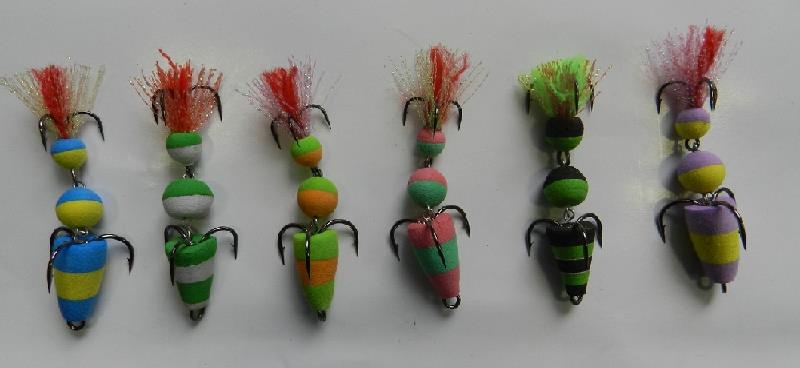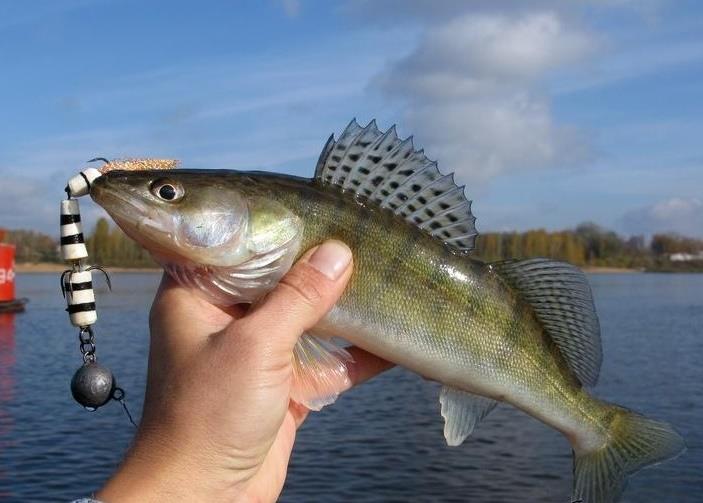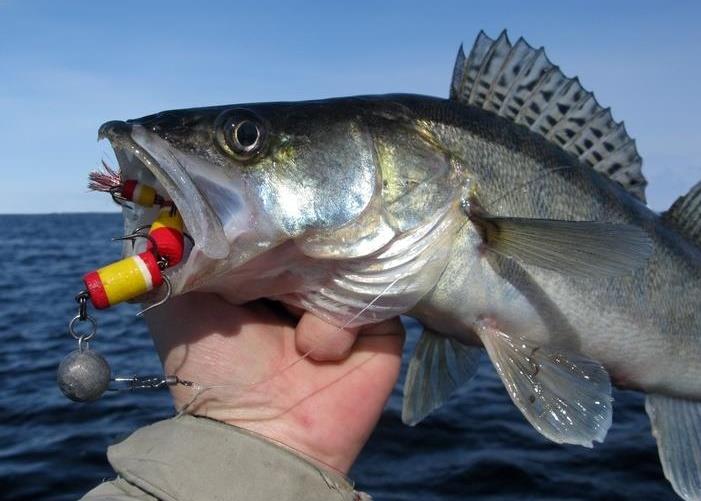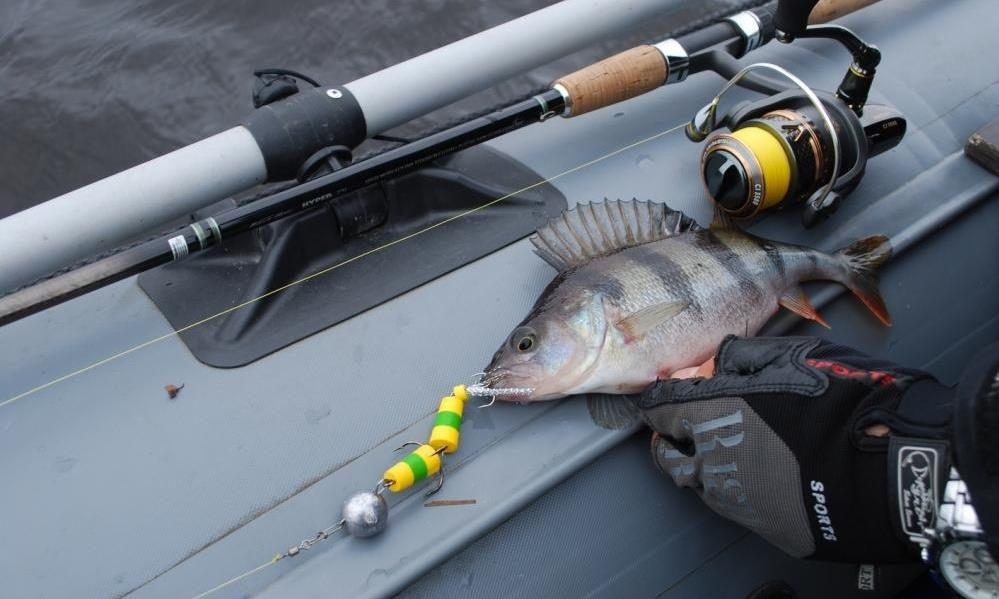Catching on a mandula
The design of the mandula is not at all complicated, as it might seem at first glance. It consists of several (most often three) pieces of foam plastic of a cylindrical or conical shape, differing in length.
All parts of the body are connected to each other using a flexible coupling, consisting of winding rings and a leash. Also mandula is equipped with two triple hooks and a kind of "beard", which is made of fur or fine wool with the addition of lurex.
All cylinders of the mandula can be painted in almost any color. Most fishermen prefer lures in which dark-colored rings alternate with light-colored ones. With the help of a winding ring, the entire structure is attached to a "cheburashka sinker" with a pair of lugs.
When it gets into the water, the mandula tries to float, but a sinker and tees hold it at the bottom. Being in such conditions, the bait, when pulling up, resembles a feeding fish with its movements. Chaotic vibrations of the mandula can provoke many predators to attack.
The speed of the drive depends on the load. The more weight the load will have, the faster you need to pull out the bait. To find out the speed at which the mandula sinks to the bottom, you can experiment with different sinkers at home. Once you have figured out the fall times, you will be able to effectively practice several methods of guidance when rigging with lead weights of different weights.
For fishing with a mandula, a suitable fishing equipment is also required: a medium-hard rod with a length of 2.4-3.2 m, high-quality spinning rod, thin braided line. Quite large predators peck at the mandula, and therefore a reliable spinning rod is needed.

It is necessary to search for pike perch with the aim of catching on a mandula, first of all, in places where shallow waters go to great depths. A lure equipped with a heavy sinker will quickly sink to the bottom, and if the dump is located close to the shore, a quick ascent, accompanied by slight twitching, will not allow the mandula to catch on obstacles and at the same time may provoke a pike perch swimming nearby.
Having felt the bite, you need to make a sharp and powerful jerk in order to break through the strong jaws of the predator. First, the pike perch tries to shock the "fish" with its grip, then turns the victim over for subsequent swallowing. As soon as the predator realizes that it has attacked a non-live fish, it will spit out the bait at the same second.
Often, the bite appears after the first pull-up. Having reacted to the bait, the predator catches up with it and attacks with a new lift. When fishing in ponds with stagnant water, you can try using stepped wiring using a small weight in the rig.



Pike fishing tactics are almost the same. But this predator must be looked for in small bays of reservoirs and rivers. A good bite will be at bends, where holes are formed under the banks. In such places, the water flow slows down, and the food goes to the bottom. An even more insatiable pike swims behind the hungry small fish. You need to start fishing for such areas from the middle of the reservoir, gradually reducing the casting distance. On lakes and reservoirs, the predator loves to hunt on the edge. 
 For perch, a miniature mandula is used, which in its design does not differ from large baits, but has a length of about 3-6 cm. Color does not play a significant role, it is the alternation of dark and light colors that is more important.
For perch, a miniature mandula is used, which in its design does not differ from large baits, but has a length of about 3-6 cm. Color does not play a significant role, it is the alternation of dark and light colors that is more important.
To catch the perch, a smooth wiring is used, supplemented by light jerks. Having torn off the bait from the bottom, you need to jump 1-2 m. Noticing such a "fry", the perch will definitely react in a way that is proper for the predator.
Making a mandula with your own hands
In the presence of all the necessary materials, the mandula is made very simply. Taking out old beach slates, superglue, two tees of different sizes, 2-3 clock rings, a leash (as an option, a wire with a diameter of 0.5-0.7 mm is used), you can make an excellent bait without much difficulty and financial costs.
You will also need a thin metal needle to burn through the cylindrical parts of the mandula's body. First, we cut out several multi-colored "tablets" and burn them with a knitting needle, making small holes in the center of the body.
From such tablets we glue two cylinders of the same length, and make the third cylinder 2-3 times shorter. We put on any of the two large cylinders on the larger tee, and the resulting small cylinder on the smaller hook. We fasten the entire structure with a leash and winding rings.
